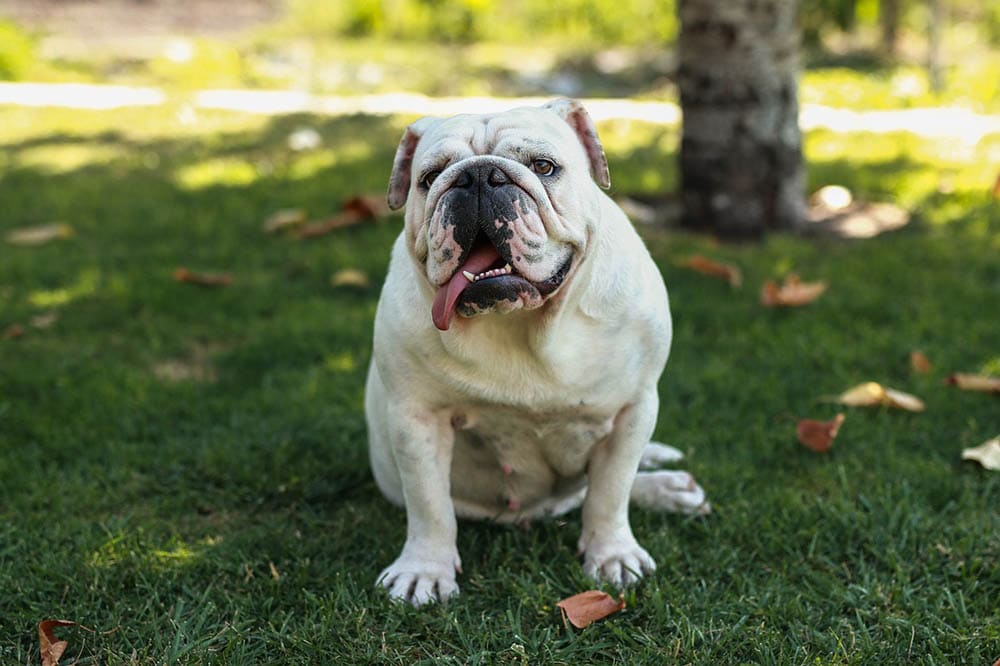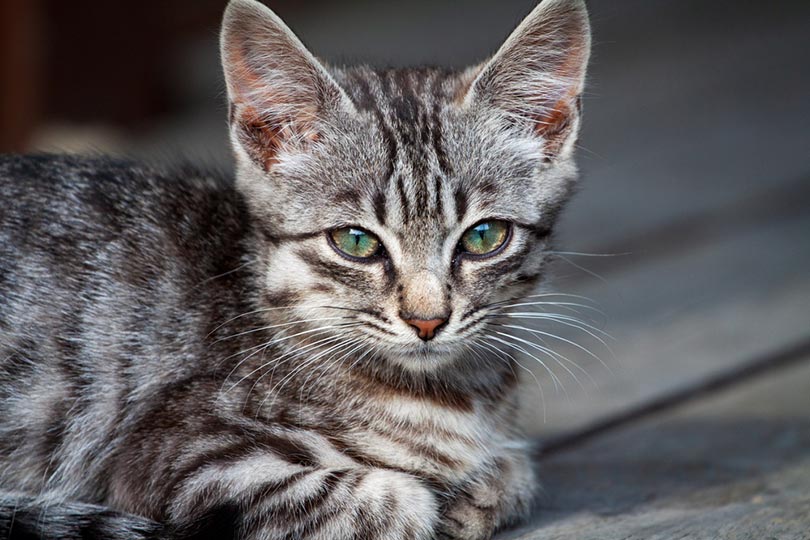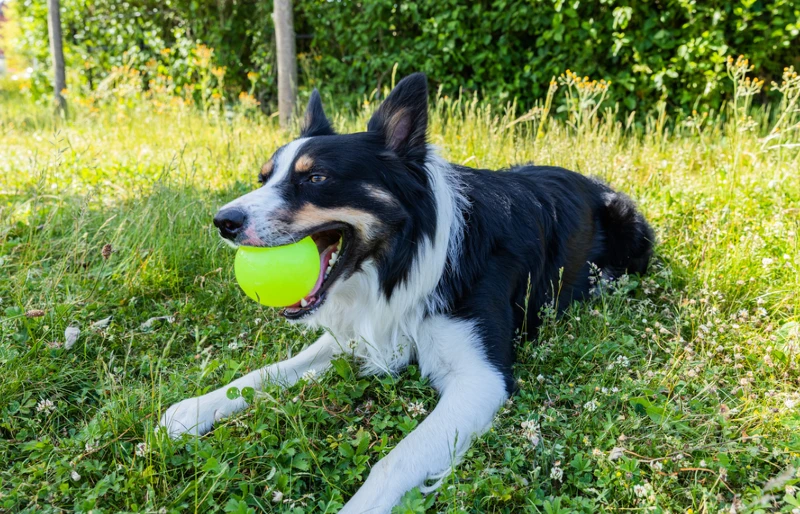How Often Do Cats Pee? Understanding What is Normal (Vet Answer)

Updated on
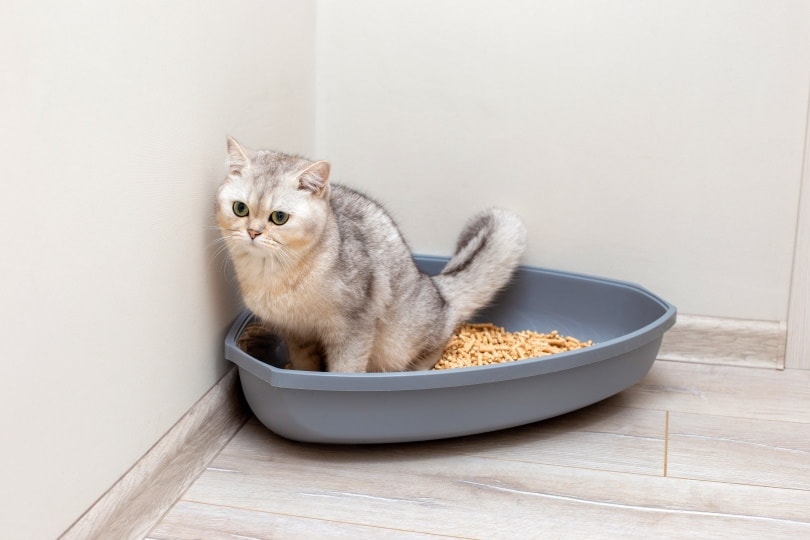
Cat pee, or urine, is the liquid waste produced by the kidneys as they filter toxins and other waste products from the blood. Urine mainly consists of water, electrolytes such as sodium and potassium, and other waste chemicals such as urea and uric acid. It passes from the kidneys via tubes called ureters, to the bladder, where it is stored until urine is excreted from the body via the urethra.
You might not give much thought to your cat’s peeing habits, other than when it’s next time to clean the litter box. But your cat’s pee (urine) and the amount produced can tell you a lot about his or her overall health. Even just knowing what’s normal for your cat can help you quickly pick up on any changes which might alert you to a problem.
Let’s look at how often cats pee, as well as what cat pee should look like, and reasons why your cat might pee more than normal.
How Often Do Cats Pee?
A healthy adult cat will normally urinate on average 2–4 times per day. Keep in mind that this is just an average, and some normal healthy cats will urinate just once per day, and some may urinate 5 or 6 times. Again, learning what’s normal for your cat is important and can help you monitor and pick up on any changes quickly. Cleaning the litter box daily will allow you to keep an eye on the frequency and amount your cat is peeing.
What Should Normal Cat Pee Look Like?
Normal urine from a healthy hydrated cat is pale yellow to clear. It should not be cloudy or contain any debris (bits floating in it). If you notice that your cat’s urine is pink-tinged, red, or dark brown in color, there could be blood in the urine so speak to your veterinarian for advice. Using a white or pale-colored litter in your cat’s litter box might help you to monitor the color of your cat’s pee.
How Much Do Cats Pee (Volume)?
The amount of urine that cats produce can vary a lot between individuals, but it’s important to learn what’s normal for your cat so that you can spot any changes quickly. Several factors can influence the amount of pee your cat produces, and we’ll look at these in more detail later in the article, but overall, your cat should pee roughly the same amount each day. An increase in the amount your cat is urinating is called polyuria. A decrease in urine production is called oliguria. Either one of these could be a cause for concern.
Most adult cats will produce between 0.5–1 fl oz (10-25ml) of urine per pound (25-50ml/kg) of body weight per day. But how do you know how much this is without actually measuring it? If you use clumping litter, it is easy to monitor the size and number of your cat’s urinations each day.
If you use absorbent litter, it can be a little trickier to monitor, but you will still get used to the number and size of the pee areas in your cat’s litter box each day.
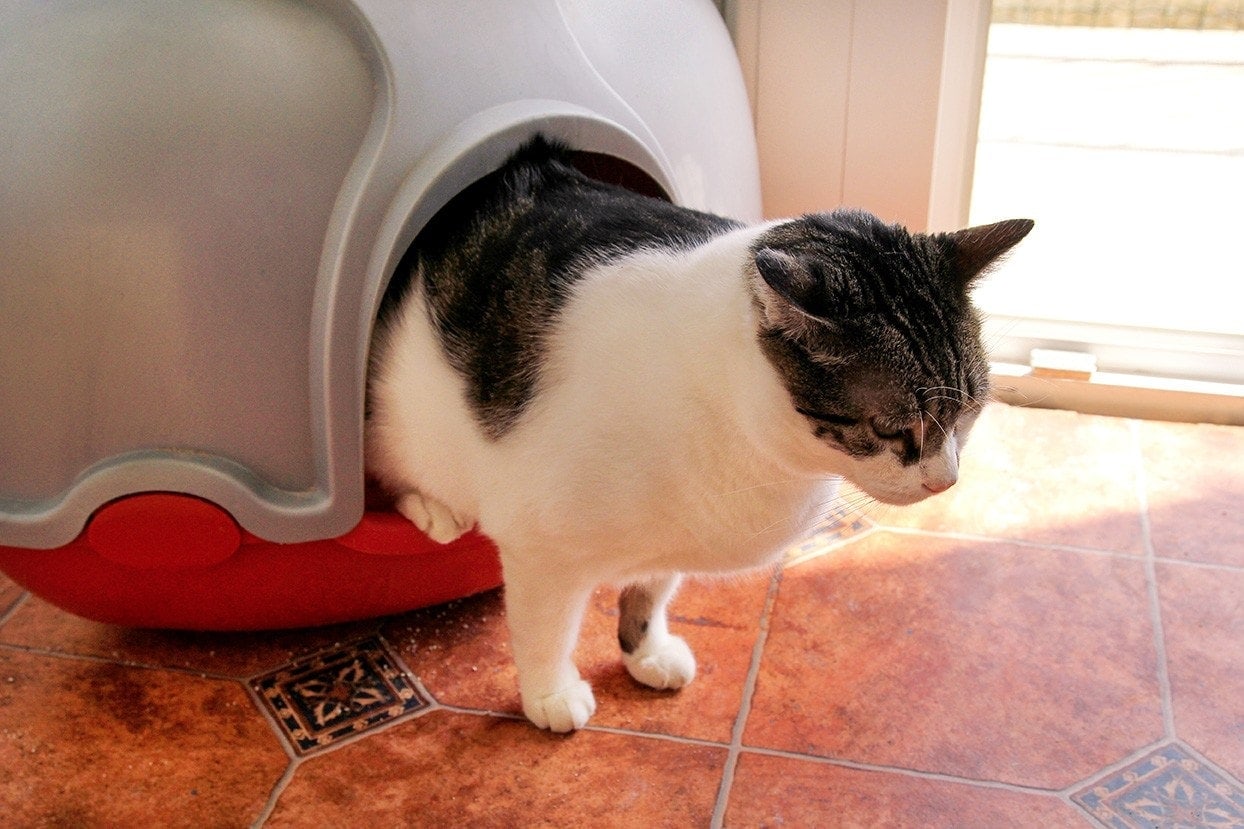
Factors That Can Affect How Much Your Cat Is Peeing
Water Intake
It makes sense that cats that drink more will pee more. If your cat suddenly starts drinking more water, it is natural that he will also pee more. This could be a sign that something is wrong though, so be sure to consult your veterinarian if you notice that your cat is drinking more and peeing more, or drinking less and peeing less than usual.
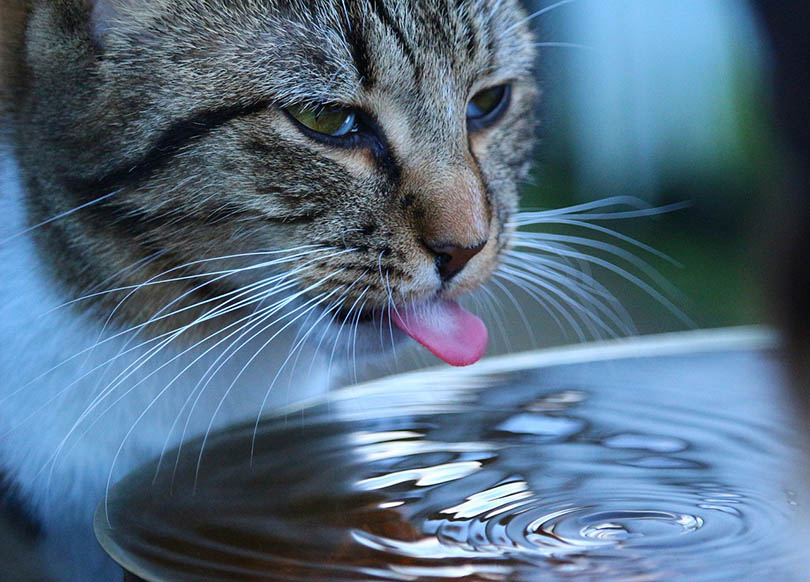
Wet Food vs Dry Food
Similarly, cats that eat wet food will have a higher water intake than those just eating dry food. This means that cats who eat pouches or tins of wet food are likely to produce more urine than those that exclusively eat dry biscuits.
Medications
There are several medications that may cause your cat to drink more and subsequently pee more. One of the most commonly administered medications that will cause your cat to urinate more is a corticosteroid called prednisolone. Your veterinarian should warn you if your cat is taking a medication that is likely to make him pee more, but always ask if you are unsure.
Medical Conditions
There are a huge number of different medical conditions that could affect how much and how frequently your cat is urinating. Some of the more common ones are discussed below.
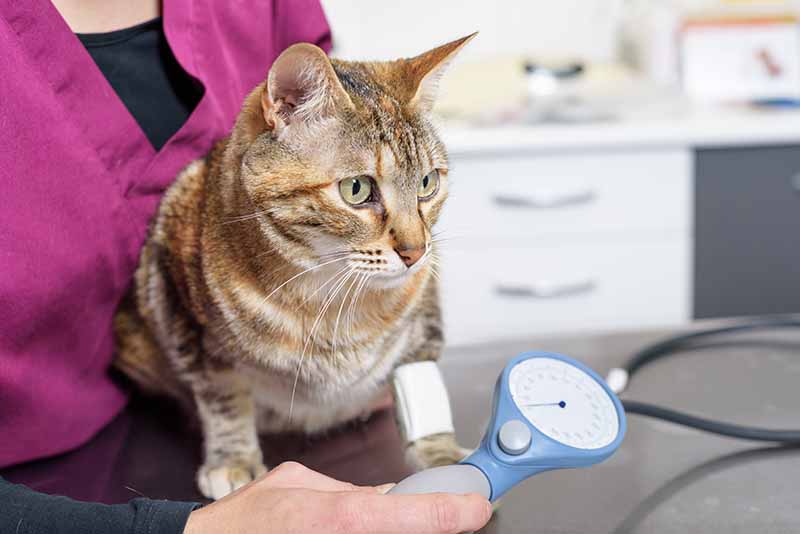
Stress
Stress may cause your cat to urinate more or less frequently than he usually does. There can be many causes of stress for cats so speak to your veterinarian if the reason isn’t immediately obvious or you can’t remove the source of stress.
Medical Conditions That Can Affect Your Cat’s Urine Output
Dehydration
As you might expect, if your cat is dehydrated, he will produce less urine. Dehydration can be very serious so contact your veterinarian for further advice if you are concerned that your cat is dehydrated.
FLUTD
This stands for Feline Lower Urinary Tract Disease and is not one singular condition but rather a group of diseases that can cause changes in your cat’s urination habits. Often, a cause cannot be found, and it is referred to as Feline Idiopathic Cystitis (FIC). The clinical signs can all be very similar regardless of the cause, including pain when urinating, blood in the urine, urinating more frequently, or — worst of all — the inability to pass urine.
If your cat ever stops producing urine, particularly if he is straining to go but no urine is produced, then this is an emergency, and your cat needs to visit your veterinarian immediately. This is usually due to a blocked urethra, either from inflammation, crystals, or stones that have formed in the urine.
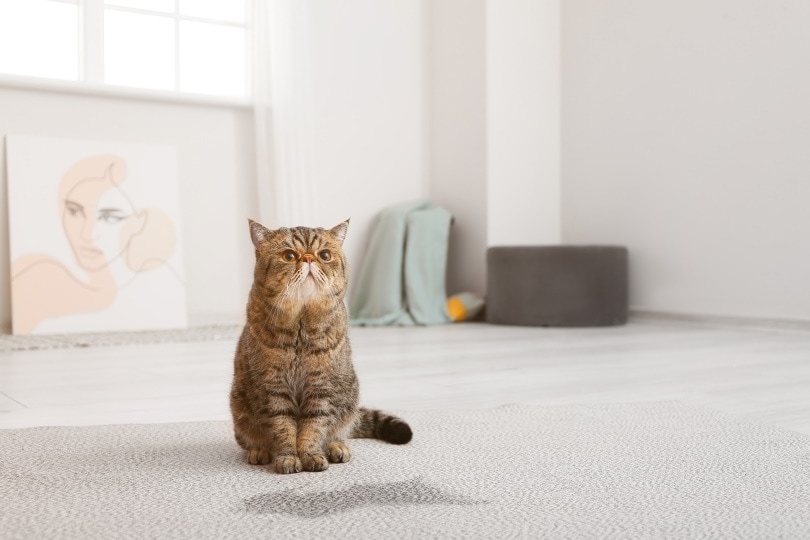
UTI
A Urinary Tract Infection (UTI) can present with similar signs as a cat with FLUTD, although is actually less common. A UTI will probably make your cat visit his litter box more frequently than usual as they feel the urge to void urine as soon as it’s produced. He won’t necessarily produce more urine; he’ll just go more often and produce smaller amounts when he does. If your cat has a UTI, the urine produced might have blood in it, or be cloudy or discolored. Your veterinarian will test to rule out a UTI if your cat is showing any abnormal urinary symptoms.
Kidney Disease
Chronic kidney disease is a very common condition in older cats. It can cause cats to drink more and urinate more and unfortunately gets worse with time, although treatment may slow its progression. Acute kidney disease can happen in cats of any age, usually because of ingestion of a toxin. Acute kidney disease can result in far less urine being produced than usual. Both need veterinary treatment.
If you need to speak with a vet right now but can’t get to one, head over to JustAnswer. It’s an online service where you can talk to a vet in real time and get the personalized advice you need for your pet — all at an affordable price!
Diabetes
One of the first signs of diabetes is a marked increase in drinking and peeing. This is a serious disease that requires prompt treatment so speak to your veterinarian if you are concerned your cat could be diabetic.
Hyperthyroidism
This is the term given to an overactive thyroid gland and is a very common condition in older cats. Affected cats will often pee more frequently as well as eat more and lose weight. A blood test is required to diagnose this disease, but it is treatable.
Cancer
Different types of cancer may cause a cat to pee more or less than usual. Cancer of the urinary tract can often cause your cat to have problems urinating, although this is much less common than some of the other conditions mentioned above.
Final Thoughts
As you can see, your cat’s pee and the amount he produces can tell you an awful lot about his health! Getting to know what’s normal for your cat will help you to spot any changes quickly. If you do notice your cat peeing more often, or less often, you should get your cat checked over by your veterinarian. It is helpful to take a urine sample with you to your cat’s appointment, which is usually obtained by using a non-absorbable cat litter in the litter box.
Your veterinarian will be able to quickly rule out some of the above diseases by testing your cat’s urine. The most important thing to remember is that if your cat is having trouble passing urine, or he stops passing urine completely, then he needs to be taken to a veterinarian immediately as this can be life-threatening.
Cat pee might seem like a slightly unpleasant topic but it’s an important one, so don’t just see cleaning out the litter box as another chore. Instead, use it as an opportunity to keep an eye on your cat’s health and take him to the veterinarian to get him checked out if you notice any changes.
Featured Image Credit: Natasha Zakharova, Shutterstock




